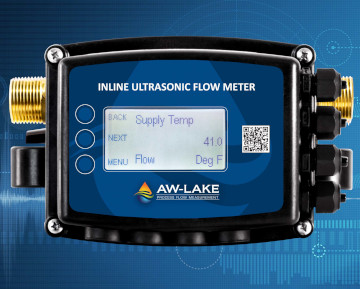In today's world, industries are constantly looking for ways to improve their productivity and efficiency. One way they do this is by adopting automation technologies, which help them streamline their operations and reduce costs. One such technology is the Wireless Flow Transmitter, which has become increasingly popular in recent years.

Wireless Flow Transmitters are a type of IoT device that can communicate wirelessly with other devices, such as PC Automation systems, remote monitoring applications, and other control systems. These devices use sensors to measure the flow of liquids in pipes, tanks, and other industrial equipment, and transmit this data to a central repository for analysis and processing.
One recent example of a revolutionary Wireless Flow Transmitter is the SFS-WP from SignalFire and AW-Lake. This device integrates AW-Lakes TRG turbine or JV-CG or JV-KG positive displacement flow meter with a SignalFire Sentinel radio node to create a wireless flow meter that works in a mesh network. The device sends data via Modbus to a Gateway where it is transferred to a PC, PLC or other control system. This technology has the potential to revolutionize the way industries monitor and manage their flow systems.
With this Wireless Flow Transmitter, industries can now monitor their flow systems remotely, which can significantly reduce downtime and maintenance costs. It also eliminates the need for wired connections, which can save time and money. This device is also designed to work in harsh industrial environments, making it ideal for use in various industries such as oil and gas, chemical processing, water treatment, and pharmaceuticals.
The SFS-WP Wireless Flow Transmitter also offers real-time data and analytics, allowing operators to make informed decisions faster. This technology allows industries to track their flow systems in real-time, ensuring entire systems are running at optimum capacity. This means that maintenance technicians can quickly identify potential problems and take corrective action before they become major issues.
Moreover, the integration of a wireless transmitter with existing systems enhances the efficiency of the entire workflow. For example, the transmitter can be set to provide alerts and generate reports that highlight bottlenecks in the system, which can help optimize the workflow. Additionally, the system can integrate with other automation technologies such as AI and machine learning to improve its efficiency further.
In conclusion, the SFS-WP Wireless Flow Transmitter from SignalFire and AW-Lake is a groundbreaking technology that has the potential to revolutionize how industries monitor and manage their flow systems. With its real-time data and analytics capability, it offers a faster and more efficient method of tracking systems, ensuring processes run at their maximum efficiency. The integration with other automation technologies offers industries a complete solution for streamlining their operations, saving time, improving productivity and reducing maintenance costs. This device represents the future of the industrial internet and shows how automation can deliver significant benefits to a broad range of industries.